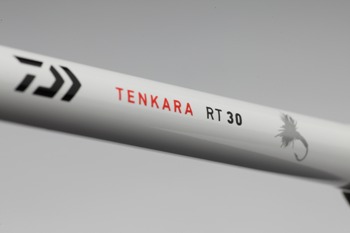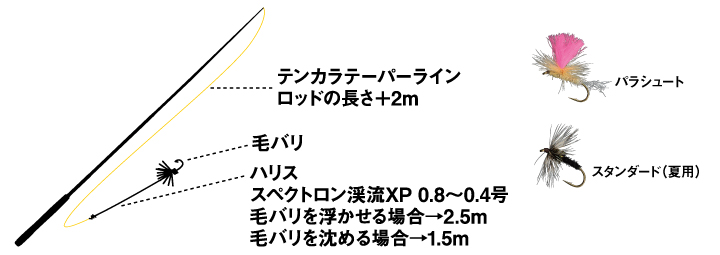DAIWA Tenkara RT 30
Overview

41cm small joint rod ideal for Tenkara fishing debut

Tenkara fishing is one of the traditional fishing methods in Japan. "Levelline Tenkara" has established a simpler and more fishing tenkara style based on the technique backed by tradition, and with the evolution of tackle. It is now becoming the standard for tenkara fishing. In addition, while tenkara fishing is attracting worldwide attention, it is a natural flow that these two types of fishing, which have a common tool called "Kebari = fly", are fused, and the fly that respects its simple charm. "Fly Style Tenkara" was born from Fishermen. While emphasizing the efficiency of tenkara, we propose a new tenkara fishing with higher gameplay by actively incorporating fly patterns widely used in fly fishing.
"Tenkara RT" is a tenkara rod developed to make it easier to enjoy tenkara fishing. It has a small joint size of 41 cm and is easy to carry so that it fits comfortably in a daypack. It also supports heavy taper lines and is equipped with a solid tip with excellent durability in a tone that emphasizes operability. It has a high level of basic performance required for a tenkara rod, such as a grip that is not slippery and has a soft feel. Recommended as a sub rod for veteran anglers as well as beginners who want to try tenkara fishing.

[Solid tip]

[Soft grip that is easy to grip]

[Lower plug]

[Name part]

[Joints]

[41cm shimai that is easy to carry]
The charm of Tenkara, which is profound because of its simplicity
[Level line style: You can master level line tenkara if you follow the three basics! ]

[Level line Tenkara gimmick]

1: Drive the Kebari into the points and quickly blend them into the water.
⇒ By submerging just below the surface of the water, you can make the Kebari hold in the mountain stream fish without any discomfort.
2: Keep and pour a moderate amount of thread tarmi that does not pull Kebari.
⇒Since it is a lightweight level line, it is possible to sink. The movement of Talmi catches Atari, and it is the secret that Talmi can hold hair burrs for a long time without any discomfort.
3: Make sure that the fish is firmly holding the Kebari and match.
⇒In many cases, even if it reacts to hair burrs, it does not eat. Don't be fooled by the splash of "Basha!"
[Fly style: Be aware of the flow and use the two methods properly]

[Fly style tenkara gimmick]

[Fly style tenkara gimmick]
The basic techniques of Fly Style Tenkara can be broadly classified into two types: "flowing toward the upstream" and "flowing toward the downstream" from the front. The method of fishing to flow upstream is a technique to flow Kebari in a natural way. At that time, what is important is how to avoid the flow resistance applied to the Kebari represented by the parachute pattern. By making Harris thinner and longer, resistance is reduced, and in some cases, Kebari are naturally shed by making full use of the technique of hitting the line that was swept by the fast flow in front to the upstream side. This is the most exciting way to fish, where you can see the moment when a mountain stream fish catches the hair burr on the surface of the water.
The method of fishing that flows toward the downstream is a technique that appeals to mountain stream fish by using the resistance of the flow and letting the flow cross the Kebari. Drop the standard type hair burrs slightly upstream of the point and sink them, and send the Kebari to the line with the tarmi made to appeal at the point. It is an exciting technique that allows you to feel the atari directly on the taper line and at hand.
Features
Rod Sections (pcs) | 9 |
Rod Length | 298 cm |
Rod Closed Length | 41 cm |
Rod Weight | 71 g |
Rod Line | Level & Taper |
Rod Action | NA |
Rod Tip/Butt Diam | 0.8 mm / 11.9 mm |
Rod Material | Carbon content : 87% |
Brand | DAIWA |
| Bonus name | Discount | Discount, % | Affiliate |
|---|---|---|---|
| Cash Back 5% | 0 | 420 |
Be the first to write a review of this product!

